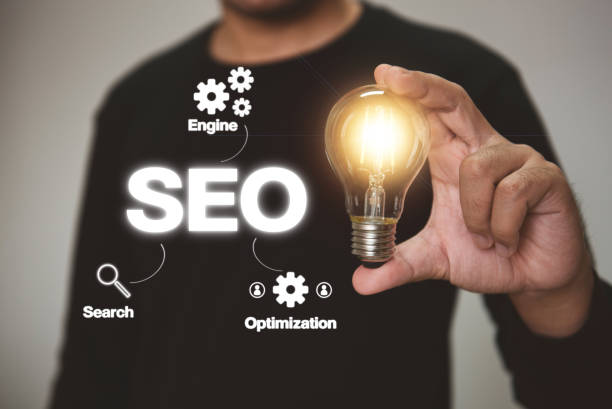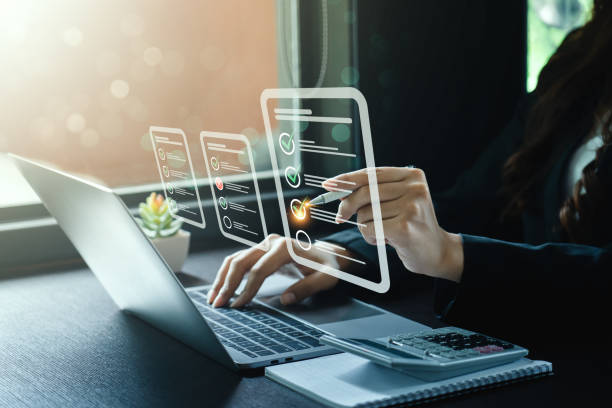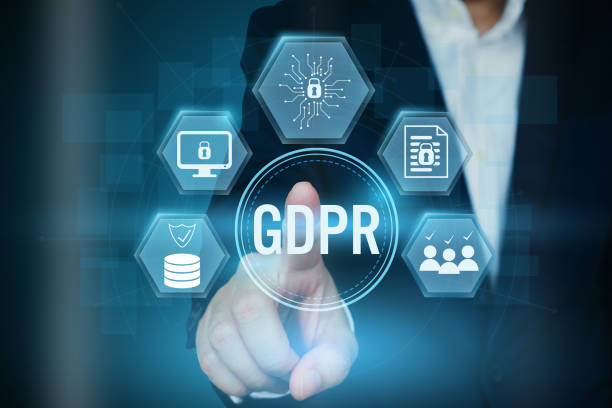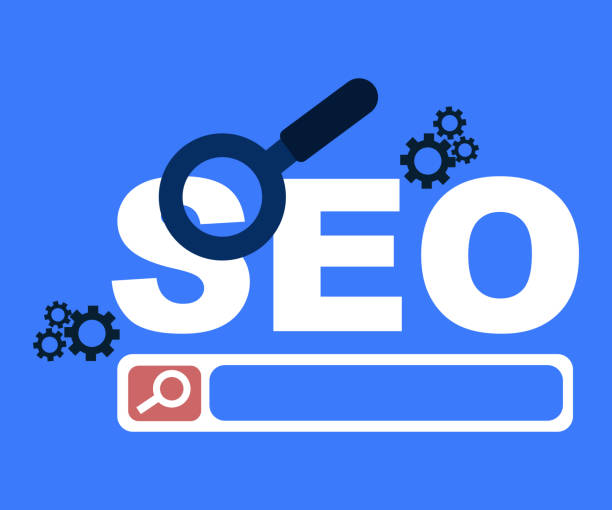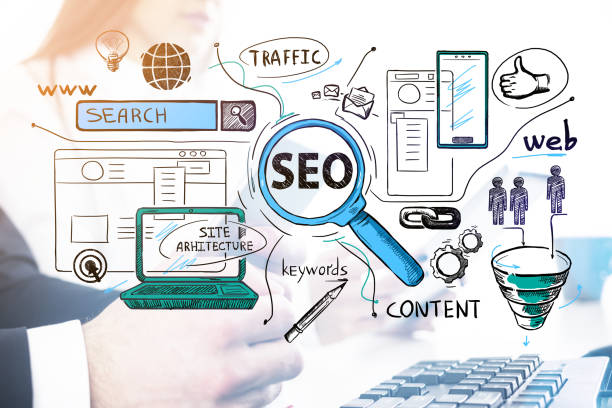Comprehensive and Practical Guide to On-Page Content SEO
What is On-Page SEO and Why Does It Matter? Keyword research is one of the most important steps in On-Page SEO.The purpose of this research is to identify the words...
- رسا وب آفرین
- اپلیکیشن هوش مصنوعی موبایل
- Comprehensive Guide to Choosing and Using Mobile AI Applications

فهرست مطالب
What is On-Page SEO and Why Does It Matter?
On-Page SEO (#OnPageSEO) refers to a set of actions taken within a website to improve the site’s ranking in search results.
These actions include optimizing content, site structure, HTML tags, and other factors related to the site.
In fact, On-Page SEO helps search engines better understand the content of the site and show it to relevant users. The importance of On-Page SEO stems from the fact that it forms the foundation of a site’s ranking.
Without strong On-Page SEO, efforts for Off-Page SEO (#OffPageSEO) and link building alone cannot achieve desirable results.
A website with optimized structure and content has a better chance of achieving a high ranking in search results and, as a result, will attract more traffic.
From the user’s perspective, a site with proper On-Page SEO provides a better user experience; because users can easily find the information they need.
To better understand, On-Page SEO can be considered as the foundation of a building.
The stronger and more precise this foundation is built, the more stable and resistant the final building will be.
In the web world, the stronger the On-Page SEO of a site, the more stable and higher its ranking and traffic will be.
Therefore, investing in On-Page SEO is a long-term and profitable investment for any business looking for a successful presence in the online space.
You can also get more information on Wikipedia
Research shows that 80% of customers trust companies with professional websites more. Does your current website build that trust?
With Rasaweb’s corporate website design services, solve the problem of customer distrust and weak online image forever!
✅ Create a professional image and increase customer trust
✅ Attract more sales leads and grow your business
⚡ Get a free consultation
Keyword Research; The First Step in On-Page SEO
Keyword research is one of the most important steps in On-Page SEO.
The purpose of this research is to identify the words that users use to search for information related to your business.
These keywords should be strategically used in your site’s content so that search engines can associate your content with users’ searches.
There are various tools you can use to conduct keyword research.
Some of these tools include: Google Keyword Planner, Ahrefs, Semrush, and Moz Keyword Explorer.
These tools help you find search volume, competition level, and keywords related to your topic. When choosing keywords, look for words that are both relevant to your business and have acceptable search volume.
Also, pay attention to the level of competition for each keyword.
Words with high competition may be harder to rank for. In addition, pay attention to the variety of keywords.
Use main keywords, secondary keywords, and Long-Tail Keywords.
Long-tail keywords are more precise search phrases that usually have lower search volume, but higher conversion rates. For example, if your business sells sportswear, the main keywords can include “sportswear”, “buy sportswear” and “sportswear store”.
Secondary keywords can include “women’s sportswear”, “men’s sportswear” and “children’s sportswear”.
And long-tail keywords can include “buy women’s sportswear for yoga”, “men’s sportswear store in Tehran” and “best brand of children’s sportswear”. Using appropriate keywords in the content of the site helps search engines to better understand your content and show it to relevant users.
This leads to increased site traffic and improved site ranking in search results.
Optimizing Title and Meta Descriptions
The Title Tag (#TitleTag) and Meta Description (#MetaDescription) are two important elements in On-Page SEO that are displayed in search results.
The page title is the main title of the page that is displayed at the top of the browser and in search results.
The meta description is a summary of the page’s content that is displayed below the title in the search results. Optimizing the title and meta description is important because these two elements are the first things users see in the search results.
An attractive and relevant title and meta description can encourage users to click on your site link. To optimize the page title, use the main keyword of the page in the title.
The title should be short, attractive, and relevant to the content of the page.
The title length should not exceed 60 characters. To optimize the meta description, write a summary of the page’s content in the meta description.
Use keywords related to the page in the meta description.
The meta description should be attractive, informative, and persuasive.
The meta description length should not exceed 160 characters. Here is an example of an optimized title and meta description for a sportswear sales page: Title: Buy Women’s and Men’s Sportswear | Online Store [Store Name] Meta Description: Buy the latest models of women’s and men’s sportswear with the best price and quality.
Fast delivery throughout Iran. This title and meta description includes both the main keywords (women’s and men’s sportswear), is attractive and informative, and encourages users to click on the site link.
By optimizing the title and meta description, you can increase your site’s click-through rate (CTR) and attract more traffic. On-Page SEO helps you to be seen better
| Feature | Description |
|---|---|
| Title Length | Maximum 60 Characters |
| Meta Description Length | Maximum 160 Characters |
| Keywords | Use of Main and Relevant Keywords |
| Attractiveness | Attractive and Persuasive for Clicks |
Click here to preview your posts with PRO themes ››
Optimizing Page Content
The content of the page is the heart of On-Page SEO.
Search engines use page content to understand the topic of the page and its relationship to user searches.
Therefore, optimizing page content for On-Page SEO is very important. To optimize page content, you must first identify the main keywords of the page.
Then, use these keywords naturally in the content of the page.
Avoid over-repeating keywords, as this may cause your site to be penalized. The content of the page should be informative, attractive, and relevant to the topic of the page.
Use short and readable paragraphs.
Use images, videos, and other visual elements to make the content more attractive. Use subheadings (H2, H3, etc.) to organize the content of the page.
Subheadings help search engines better understand the structure of the page content.
Don’t forget to internally link to other pages on your site.
Internal linking helps search engines find the different pages of your site and understand the relationship between them. Guarantee On-Page SEO with quality content. Update your site content regularly.
Updated content shows search engines that your site is active and provides new information.
By following these tips, you can optimize your page content for On-Page SEO and improve your site’s ranking in search results.
You can also find useful information about quality content creation on Wikipedia
Are you worried that your company’s old website will scare away new customers? Rasaweb solves this problem by designing a modern and efficient corporate website.
✅ Increases your brand credibility.
✅ Helps attract targeted customers.
⚡ Contact Rasaweb for a free consultation!
Optimizing Images
Images play an important role in the attractiveness and user experience of a site.
But unoptimized images can slow down site loading speed and negatively impact site On-Page SEO. To optimize images, you must first reduce the size of the images.
Use image compression tools to reduce the size of images without compromising quality. Use appropriate image formats.
JPEG format is suitable for images with many colors and PNG format is suitable for images with graphics and text. Use the Alt Text feature for images.
Alt Text is text that is displayed if the image does not load.
Alt Text should be descriptive of the image and include keywords related to the page. Optimize image file names.
Use descriptive file names that include keywords. For example, instead of the file name “IMG_1234.jpg” use the file name “women’s-yoga-sportswear.jpg”. By optimizing images, you can increase your site’s loading speed, improve user experience, and help your site’s On-Page SEO. On-Page SEO with optimized images will have a greater impact.
Click here to preview your posts with PRO themes ››
Optimizing URLs
URLs are the addresses of web pages.
Optimized URLs can help search engines better understand the content of the page and have a positive impact on site On-Page SEO. To optimize URLs, use short, descriptive URLs that include keywords. Use hyphens (-) instead of spaces (_) in URLs. Use lowercase letters in URLs. Avoid complex and long URLs with many parameters. For example, instead of the URL “www.example.com/page?id=123&category=4” use the URL “www.example.com/women’s-sportswear”. By optimizing URLs, you can help search engines better understand the content of the page and improve your site’s ranking in search results. On-Page SEO has a direct relationship with optimized URLs
The Importance of Site Loading Speed
Site loading speed is an important factor in On-Page SEO and user experience.
Users who are dissatisfied with your site’s slow loading speed will quickly leave your site and go to other sites.
Search engines also rank sites with low loading speeds lower. To increase your site’s loading speed, you can take the following actions: Use quality hosting. Optimize your images. Use a CDN (Content Delivery Network). Optimize your HTML, CSS and JavaScript codes. Use Caching. By increasing your site’s loading speed, you can improve user experience, reduce bounce rate, and improve your site’s ranking in search results. On-Page SEO with high website load speed gives better results
| Factor | Improvement Solution |
|---|---|
| Images | Optimizing Size and Format |
| Hosting | Choosing Quality Hosting |
| Codes | Optimizing HTML, CSS and JavaScript Codes |
| Caching | Using Caching Mechanisms |
Internal Linking
Internal linking means linking to other pages of your site from within other pages.
Internal linking helps search engines find the different pages of your site and understand the relationship between them. Internal linking also helps users easily navigate your site and find the information they need. For internal linking, use appropriate Anchor Text.
Anchor text is the text that links to another page.
The anchor text should be descriptive of the destination page and include keywords related to the page. For example, if you want to link from the “Women’s Sportswear” page to the “Women’s Sports Shoes” page, you can use the anchor text “Women’s Sports Shoes”. Avoid excessive linking.
Excessive linking may cause your site to be penalized. Internal linking is one of the most important factors in On-Page SEO that can help improve your site’s ranking in search results. On-Page SEO gives results with proper linking
Are you dissatisfied with the low rate of converting visitors to customers on your online store?
Solve this problem forever with professional online store design by Rasaweb!
✅ Increase the visitor-to-customer conversion rate
✅ Create a great user experience and build customer trust
⚡ Get a free consultation
Mobile Optimization
Today, more than half of web traffic comes from mobile devices.
Therefore, optimizing the site for mobile is very important for On-Page SEO. A mobile-optimized site must have a Responsive Design.
Responsive design means that your site automatically adapts to the screen size of different devices. Your site must have a high loading speed on mobile devices. The fonts on your site must be readable on mobile devices. The buttons and links on your site should be easily clickable on mobile devices. By optimizing your site for mobile, you can improve the user experience, reduce the bounce rate, and improve your site’s ranking in search results. Strong On-Page SEO requires the site to be responsive
Click here to preview your posts with PRO themes ››
Analysis and Continuous Improvement
On-Page SEO is an ongoing process.
After taking the initial steps, you should regularly analyze your results and apply the necessary improvements. To analyze the results of On-Page SEO, you can use various tools such as Google Analytics and Google Search Console. These tools help you see your site’s traffic, the keywords that users use to enter your site, your site’s ranking in search results, and other important information. Based on this information, you can identify the strengths and weaknesses of your site’s On-Page SEO and apply the necessary improvements. For example, if you notice that your site’s traffic has decreased through a particular keyword, you can update the content of the page related to that keyword and optimize it for On-Page SEO. By analyzing and continuously improving On-Page SEO, you can improve your site’s ranking in search results and attract more traffic. On-Page SEO means continuous analysis and improvement of the site
FAQ
| Question | Answer |
|---|---|
| What is On-Page SEO? | Refers to the set of actions that are taken within a website to improve its ranking in search engines. |
| Why is On-Page SEO important? | Because it helps search engines better understand the content and structure of your site and improves user experience. |
| What are the most important elements of On-Page SEO? | Title and meta descriptions, keywords, URL structure, quality content, image optimization, internal linking, and site speed. |
| How do we optimize the Title Tag and Meta Description? | The title should include the main keyword and be attractive, and the meta description should be a persuasive summary of the content with relevant keywords. |
| What is the role of keywords in On-Page SEO? | Keywords let search engines know what the page content is about and should be used naturally and intelligently in the text. |
| How is image optimization done for On-Page SEO? | By compressing the size, using a descriptive file name, and filling the Alt tag with related descriptions and keywords. |
| What is Internal Linking and what is its purpose? | Connecting different pages of the site to each other. This helps to distribute page authority and improve search engine crawling. |
| What is the importance of site loading speed in On-Page SEO? | High speed improves user experience and is one of the important ranking factors for search engines like Google. |
| How does Mobile-Friendliness of a site affect On-Page SEO? | Given the increase in mobile users, being responsive is essential for providing a good user experience on all devices and prioritizing Google’s mobile-first indexing. |
| What are the important content-related factors in On-Page SEO? | Originality, quality, comprehensiveness, readability, appropriate use of headings (H1, H2, etc.) and regular content updates. |
And other advertising services of Rasa Web Advertising Agency
Smart customer journey map: Professional optimization to increase click-through rates using Google Ads management.
Smart digital branding: A combination of creativity and technology for online growth through attractive user interface design.
Smart social media: Transform online growth by helping customize the user experience.
Smart advertising campaign: A professional solution for digital branding with a focus on smart data analysis.
Smart customer journey map: Professional optimization to increase site visits using marketing automation.
And hundreds of other services in the field of internet advertising, advertising consulting and organizational solutions
Internet Advertising | Advertising Strategy | Advertisement Report
Resources
What is On-Page SEO? (Moz)
,The Complete Guide to On-Page SEO (Ahrefs)
,On-Page SEO: The Complete Guide (Semrush)
,What is On-Page SEO? (Search Engine Land)
? Transform your business in the digital world with Rasaweb Afrin. By providing comprehensive digital marketing services, including custom website design, we help you shine in today’s competitive market and achieve your goals.
📍 Tehran, Mirdamad Street, next to the Central Bank, South Kazerun Alley, Ramin Alley No. 6
“`
دیگر هیچ مقالهای را از دست ندهید
محتوای کاملاً انتخاب شده، مطالعات موردی، بهروزرسانیهای بیشتر.
محبوب ترین مقالات
سئو خارجی چیست و چرا اهمیت دارد؟ لینکسازی (Link Building) یکی از مهمترین و تأثیرگذارترین اجزای...
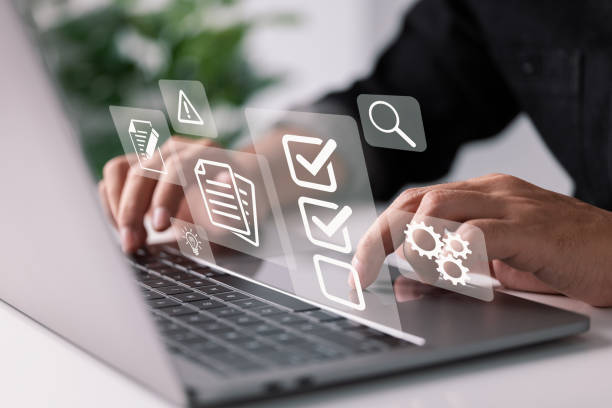
What is On-Page SEO and Why Does It Matter? Keyword Research is one of the most...

What is Artificial Intelligence and what are its applications? The idea of artificial intelligence dates back...
آمادهاید کسبوکارتان را دیجیتالی رشد دهید؟
از طراحی سایت حرفهای گرفته تا کمپینهای هدفمند گوگل ادز و ارسال نوتیفیکیشن هوشمند؛ ما اینجاییم تا در مسیر رشد دیجیتال، همراه شما باشیم. همین حالا با ما تماس بگیرید یا یک مشاوره رایگان رزرو کنید.

